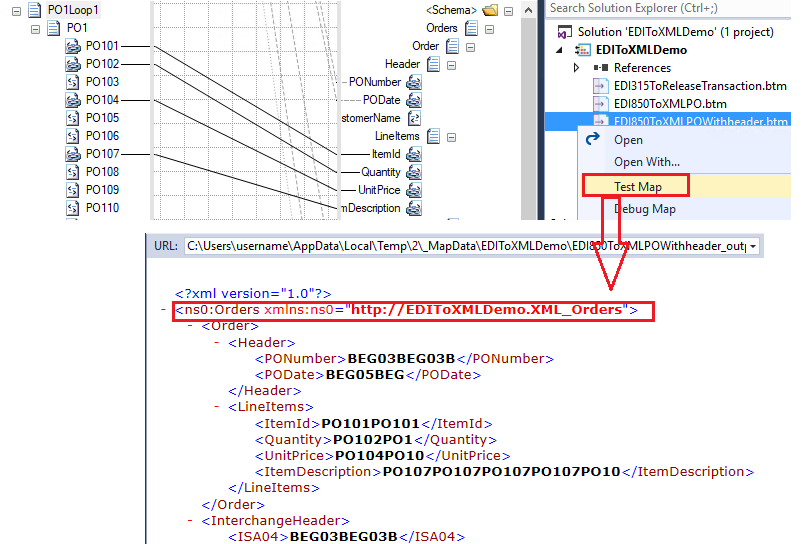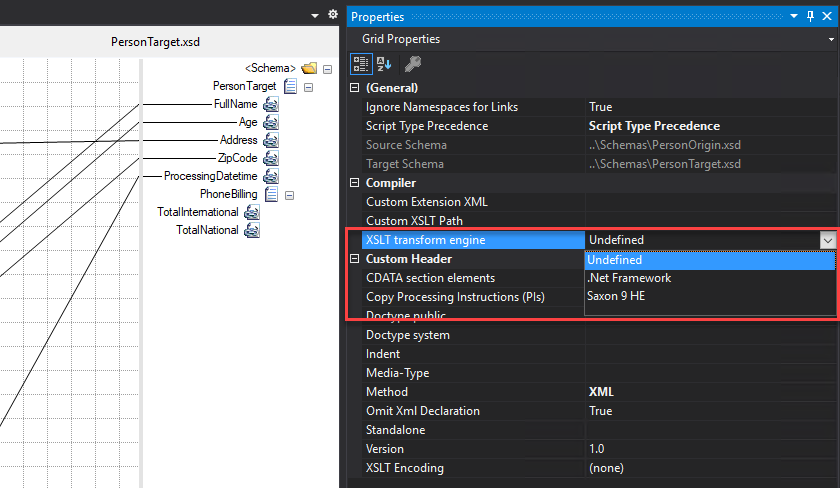

- BIZTALK XPATH FOR ATTRIBUTE VALUE HOW TO
- BIZTALK XPATH FOR ATTRIBUTE VALUE SOFTWARE
- BIZTALK XPATH FOR ATTRIBUTE VALUE CODE
- BIZTALK XPATH FOR ATTRIBUTE VALUE FREE
Here we discuss the Introduction, syntax, How to replace function works in XSLT?, and examples. This function will get deep specification to stay grip on it and highlighted how to walk through the replace strings with the regular expressions and create Stylesheet functions to do with templates. Somehow, we have discussed and concluded on replace function. And if the single-digit is higher than the sub-expressions the digit or character is replaced with an empty string.


Therefore the result of calling this stylesheet is shown below. The above template replaces the character string with the replacement. Well-textured product, Americans flavors.ĭistilled Beverages flavors, lasting case. The result should look like this.Įxample #4: Replacing multiple strings in the content Here I have taken a string png to replace and the literal _R. It produces same result as an XML file with the function.Ī very simple approach in XSLT2.0 with the values for replacing is taken. Second argument is the regular expression with ^hh. The first argument of the function is the name element defined in the value-of statement.
BIZTALK XPATH FOR ATTRIBUTE VALUE CODE
The above code replaces the current node element with the & with the string “and”.Įxample #2: Replica of the function file. Types of analysis in data Mining are classification & Prediction & Example #1: Simple Example with Replace function Replace("Historicalevent ", "i", "") - Gives output as Hstorcalevent Replace("Historicalevent", "tor", "*") - Which gives output as His*icalevent Here it replaces part of a string that matches a declared regular expression. The Specified replacement String of above statement is The function returns the value of the first string passed as an argument with every substring defined by the regular structure in the second string and finally, it is replaced by the third argument.įor a given string with a regular expression The expressions are a string of text and the sub-expressions are shown with parenthesis. As defined in the syntax, the dollar sign references the matches with the expressions as well as sub-expressions. If the specified input string has no substring that matches the defined regular expression, it gives the output as a single string similar to the input string. This function is very similar to regex-group (). The Replace function works by writing an XSLT template for this function and calls this replace whenever replacement of the string action is required. So, the following sections list the ways how String Replacement is established based on user requirements. Replace Function takes three parameters namely input as text, pattern a string fragment, replacement string.

BIZTALK XPATH FOR ATTRIBUTE VALUE SOFTWARE
Web development, programming languages, Software testing & others
BIZTALK XPATH FOR ATTRIBUTE VALUE FREE
Normally, Orchestration subscription includes value for BTS.MessageType context property, this mean you can't start orchestration with the soap envelope message type because the XmlDisassembler Component will discard the soap:Envelope content and the messaging engine will only get the soap:Body content – so at the end of the process, BTS.MessageType context property will be set to the actual message type of content under soap:Body section and the orchestration will never start with the type soap:Envelope.Start Your Free Software Development Course How do I start an Orchestration with soap:envelope message type In this case I use Xpath to get the element value and parse the resulting string into a System.DateTimeOffset structure with the following mothod: (String). At the end of the process, BTS.MessageType context property is set to the message type of actual content of the soap:Body section. Case 3: Get the value from XPath and convert it to a System.DateTimeOffset structure. Then the engine performing denormalize process by extracting message data from the body element. In the disassembling process the engine is extracting the value by using IDocumentSpec.GetBodyPath() under namespace. The value of body_xpath attribute is saved in dbo.bt_DocumentSpec table of BizTalkMgmtDb database. This value is the actual data section and will be assigned as the message part. When schema is marked as Envelope (is_envelope="yes"), the engine is looking for the body_xpath annotation. The schema name is BTS.soap_envelope_1_1 and is deployed inside under BizTalk.System BTS application. It's little known that Microsoft supplies soap envelope XSD schema as part of BizTalk system schemas. The most common scenario is when BizTalk receives SOAP Envelop. This means that if the incoming message is marked as envelope schema, the parsing engine will parse the message and will dispatch the body content of the envelope as the message body part. BizTalk parsing engine supports envelope schemas.


 0 kommentar(er)
0 kommentar(er)
